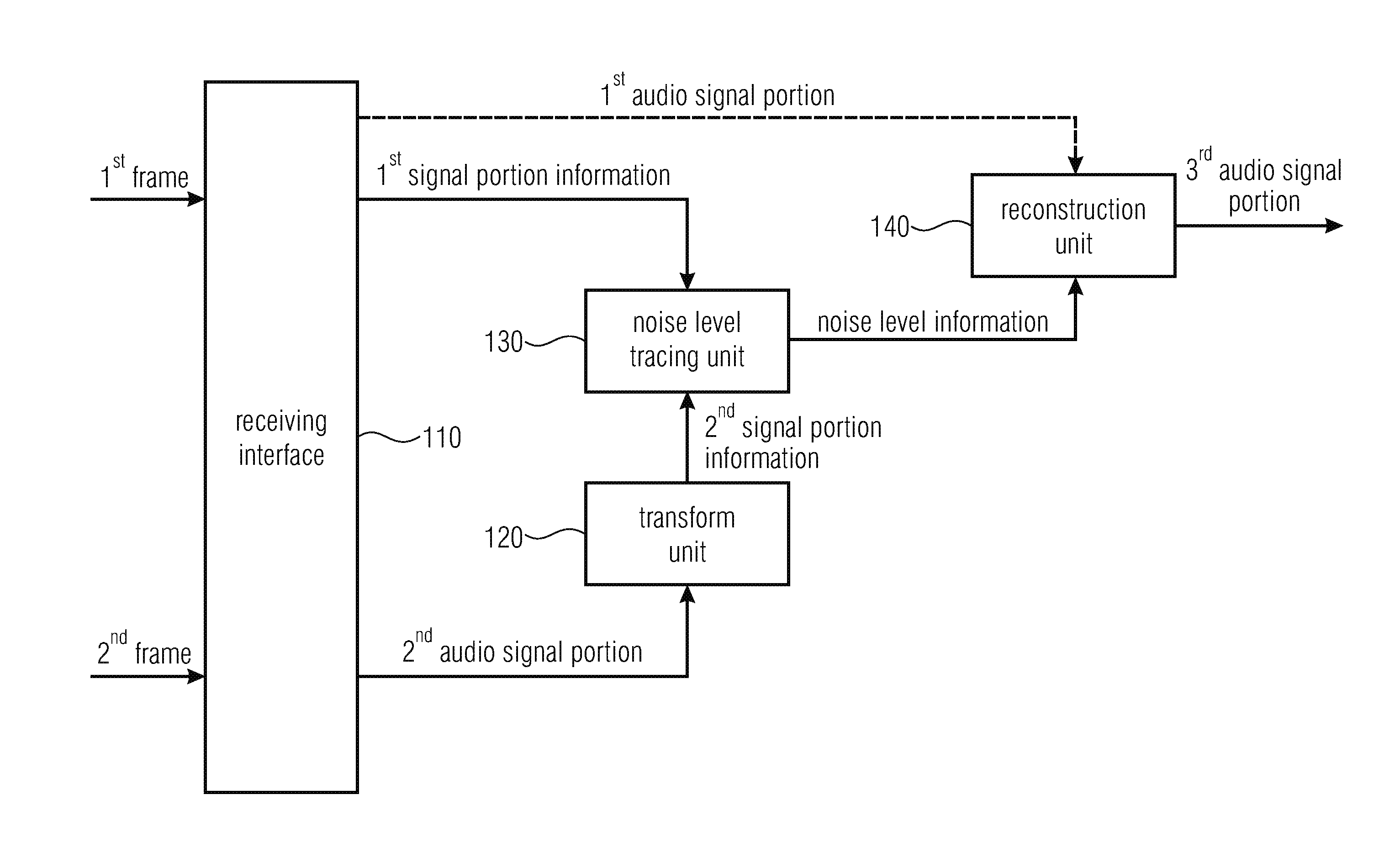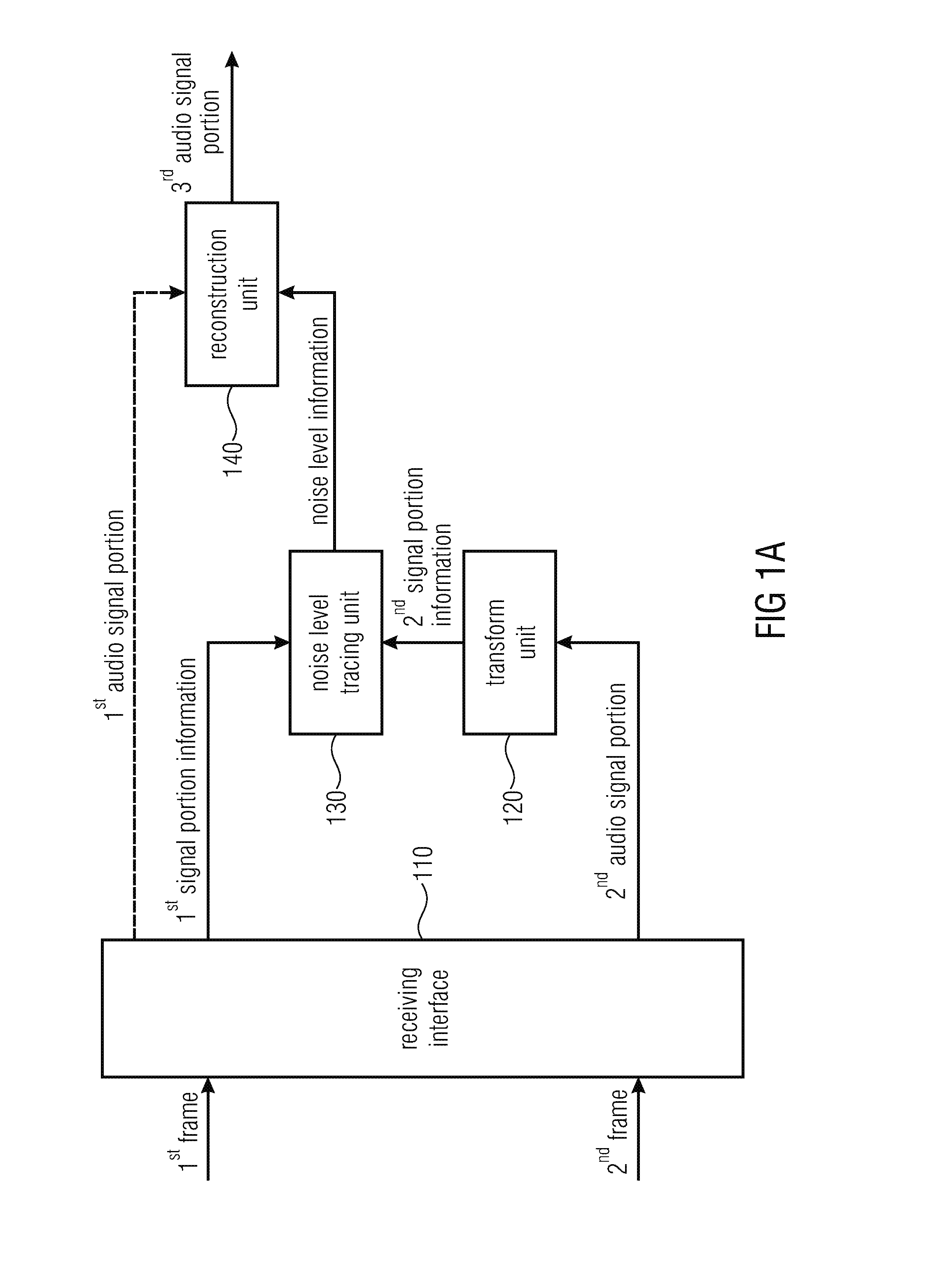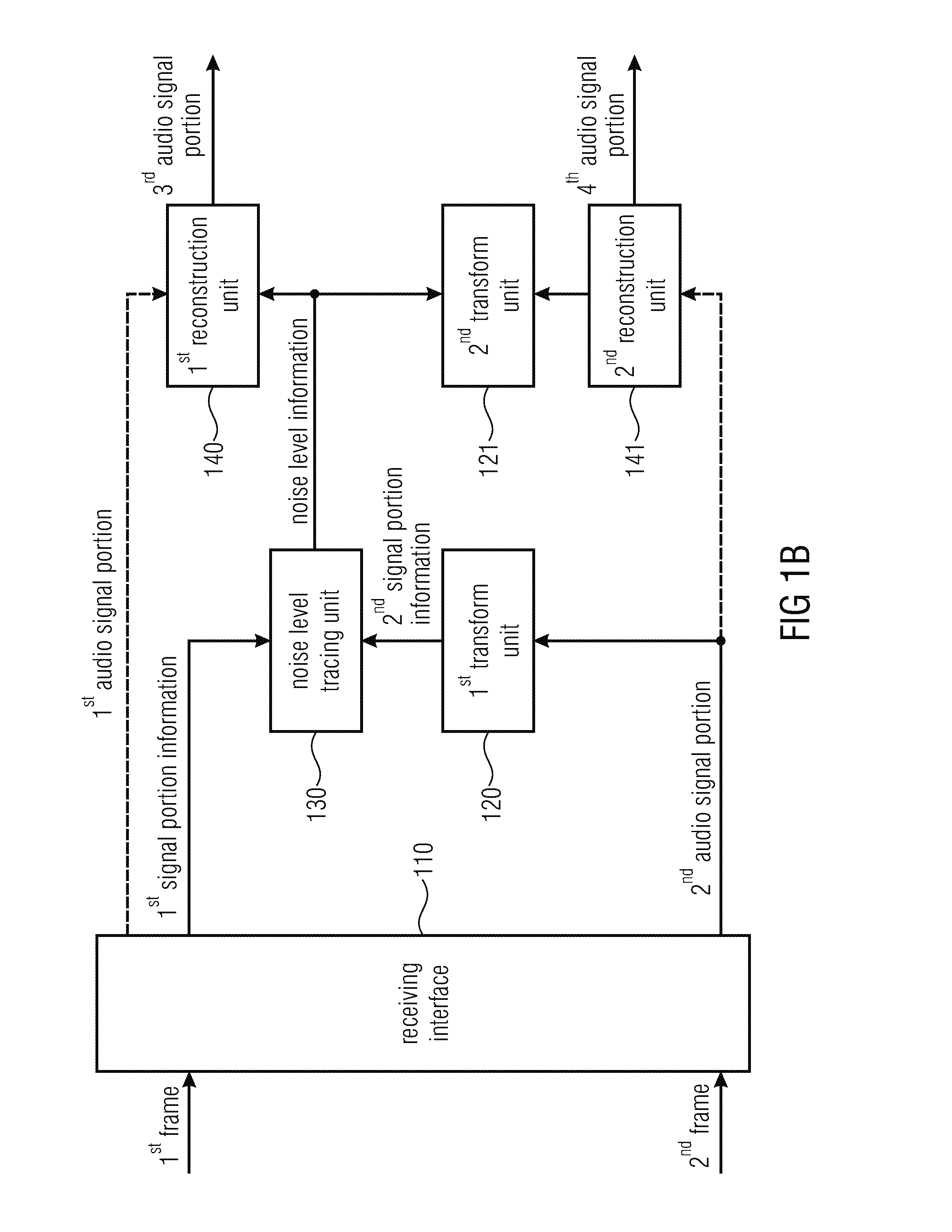Apparatus and method for improved signal fade out in different domains during error concealment
a signal fade out and error concealment technology, applied in the field of audio signal encoding, processing and decoding, can solve the problems of inability to use parameters close to one, inaccurate noise estimation, and inability to transit smoothly, so as to prolong the effect of prolonging the spectral shape of the last good fram
- Summary
- Abstract
- Description
- Claims
- Application Information
AI Technical Summary
Benefits of technology
Problems solved by technology
Method used
Image
Examples
Embodiment Construction
[0340]FIG. 1A illustrates an apparatus for decoding an audio signal according to an embodiment.
[0341]The apparatus comprises a receiving interface 110. The receiving interface is configured to receive a plurality of frames, wherein the receiving interface 110 is configured to receive a first frame of the plurality of frames, said first frame comprising a first audio signal portion of the audio signal, said first audio signal portion being represented in a first domain. Moreover, the receiving interface 110 is configured to receive a second frame of the plurality of frames, said second frame comprising a second audio signal portion of the audio signal.
[0342]Moreover, the apparatus comprises a transform unit 120 for transforming the second audio signal portion or a value or signal derived from the second audio signal portion from a second domain to a tracing domain to obtain a second signal portion information, wherein the second domain is different from the first domain, wherein the ...
PUM
 Login to View More
Login to View More Abstract
Description
Claims
Application Information
 Login to View More
Login to View More - R&D
- Intellectual Property
- Life Sciences
- Materials
- Tech Scout
- Unparalleled Data Quality
- Higher Quality Content
- 60% Fewer Hallucinations
Browse by: Latest US Patents, China's latest patents, Technical Efficacy Thesaurus, Application Domain, Technology Topic, Popular Technical Reports.
© 2025 PatSnap. All rights reserved.Legal|Privacy policy|Modern Slavery Act Transparency Statement|Sitemap|About US| Contact US: help@patsnap.com



